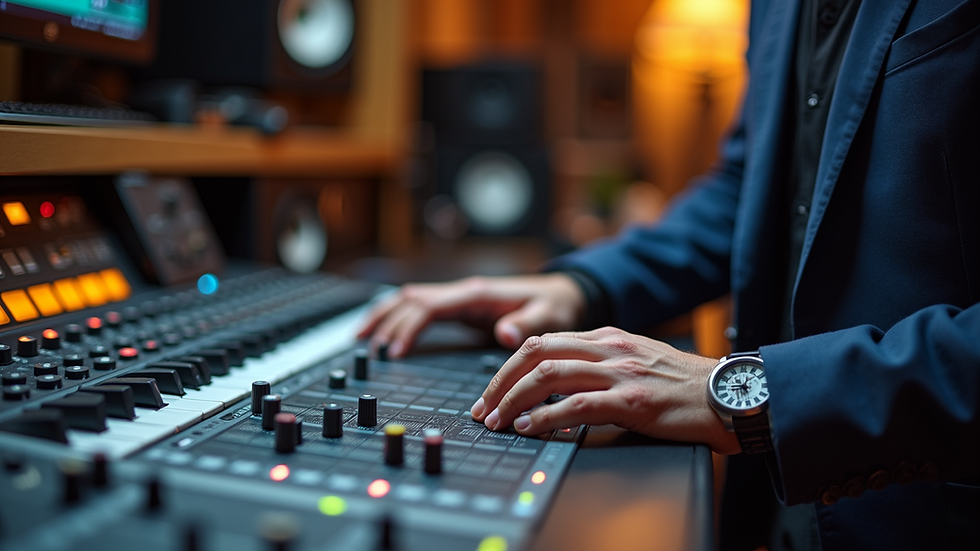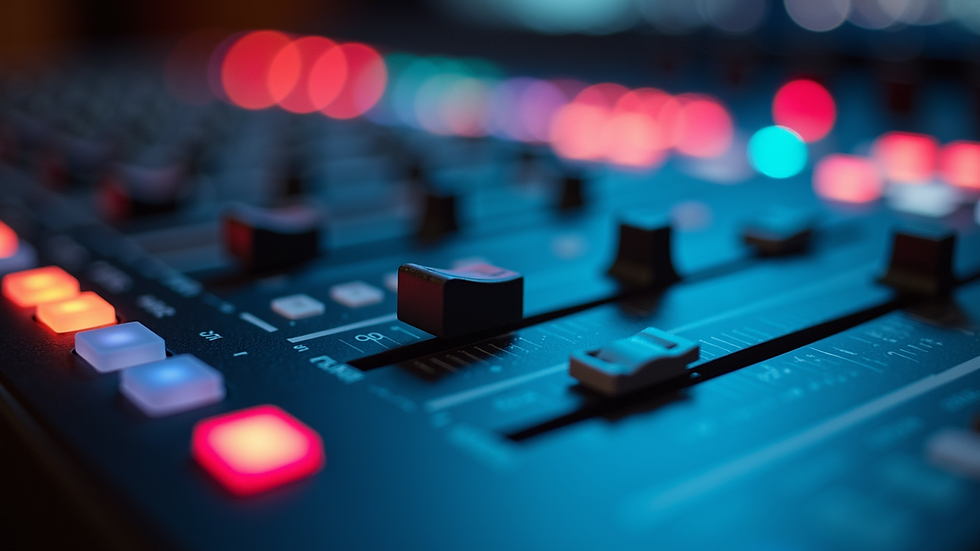Boost Your Tracks: Professional Mixing for Impactful Music
- jvonjackson13
- Jul 24
- 5 min read
Creating music is an art, but mixing it is where the magic truly happens. A well-mixed track can elevate your music from good to unforgettable. Whether you are a budding artist or an experienced producer, understanding the nuances of mixing can make a significant difference in how your music is received. In this post, we will explore the essential techniques and tips for professional mixing that can help you boost your tracks and make a lasting impact.
Understanding the Basics of Mixing
Before diving into the technical aspects, it is crucial to understand what mixing is. Mixing is the process of combining multiple audio tracks into a single cohesive piece. This involves adjusting levels, panning, equalization, and adding effects to ensure that each element of the track complements the others.
The Importance of a Good Mix
A good mix can enhance the emotional impact of your music. It allows listeners to hear every instrument clearly, creating a balanced sound. A well-mixed track can also stand out in a crowded music landscape, making it more likely to be noticed by listeners and industry professionals alike.
Essential Mixing Techniques
Now that we have a grasp of what mixing is, let’s explore some essential techniques that can help you achieve a professional sound.
1. Level Balancing
One of the first steps in mixing is balancing the levels of each track. This means adjusting the volume of each instrument or vocal so that they sit well together.
Start with the Drums: Begin by setting the level of your kick drum. This will serve as the foundation for your mix.
Add Bass: Next, bring in the bass guitar or synth. The kick and bass should work together harmoniously.
Layer Other Instruments: Gradually add other elements, such as guitars, keyboards, and vocals, adjusting their levels as you go.
2. Panning
Panning is the process of placing sounds in the stereo field. This helps create a sense of space and dimension in your mix.
Use Left and Right: Place some instruments to the left and others to the right. For example, you might pan guitars slightly to one side and keyboards to the other.
Keep Vocals Centered: Typically, lead vocals should be panned to the center to ensure they are the focal point of the mix.
3. Equalization (EQ)
EQ is a powerful tool that allows you to shape the sound of each track. It helps to remove unwanted frequencies and enhance the desirable ones.
Cut Unwanted Frequencies: Use a high-pass filter to remove low-end rumble from vocals and guitars.
Boost Key Frequencies: Identify the frequencies that make each instrument shine and boost them slightly. For example, you might boost the high frequencies of a vocal to add clarity.
4. Compression
Compression helps to control the dynamic range of your tracks. It ensures that the loudest parts are not too overpowering while bringing up the quieter sections.
Set the Ratio: A common starting point is a 3:1 ratio for vocals. This means that for every 3 dB the signal exceeds the threshold, the output will only increase by 1 dB.
Adjust Attack and Release: A fast attack time can help tame peaks, while a slower release can add sustain to the sound.
5. Reverb and Delay
Adding reverb and delay can create depth and space in your mix. These effects can make your music feel more immersive.
Use Reverb Sparingly: Too much reverb can muddy your mix. Use it to add a sense of space without overwhelming the original sound.
Experiment with Delay: Delay can be used creatively to add interest. Try using a short delay on vocals to create a thicker sound.
Mixing for Different Genres
Different genres have unique mixing requirements. Understanding these can help you tailor your approach.
Pop Music
In pop music, clarity and punch are key. Focus on making vocals stand out and ensure that the drums have a strong presence.
Use Bright EQ: Boost the high frequencies on vocals and synths to create a bright, polished sound.
Tight Compression: Use compression to keep the dynamics in check, ensuring that the track feels energetic and lively.
Rock Music
Rock music often relies on powerful guitars and drums. The mix should feel aggressive and full.
Guitar Layers: Use multiple guitar tracks and pan them to create a wide sound.
Drum Presence: Make sure the kick and snare are punchy and prominent in the mix.
Electronic Music
In electronic music, the mix can be more experimental. Focus on creating a rich soundscape.
Layer Sounds: Use multiple layers of synths and pads to create a lush atmosphere.
Dynamic Range: Play with dynamics to create tension and release throughout the track.
Common Mixing Mistakes to Avoid
Even experienced mixers can fall into common traps. Here are some mistakes to watch out for.
1. Over-Mixing
It can be tempting to keep adding effects and adjustments, but sometimes less is more.
Know When to Stop: Trust your instincts. If a mix feels good, it might be time to move on.
2. Ignoring the Reference Track
Using a reference track can help you gauge the quality of your mix.
Choose a Similar Track: Pick a song in a similar genre and compare your mix to it. This can help you identify areas for improvement.
3. Neglecting the Low End
The low end is crucial for a full sound.
Check Your Mix on Different Speakers: Make sure your bass translates well across various playback systems.
The Final Touches
Once you have completed your mix, it is time for the final touches.
1. Automation
Automation allows you to make dynamic changes throughout the track.
Adjust Levels: Use automation to raise or lower levels at specific points, adding interest and movement to your mix.
2. Final EQ and Compression
Before bouncing your mix, apply a final EQ and compression to glue everything together.
Use a Bus Compressor: A bus compressor can help to unify the mix and add a polished sound.
3. Listening on Different Systems
Finally, listen to your mix on various systems, such as headphones, car speakers, and home audio systems.
Make Adjustments: Take notes on how your mix translates and make any necessary adjustments.
Wrapping It Up
Mixing is an art that requires practice and patience. By mastering the techniques outlined in this post, you can create impactful music that resonates with listeners. Remember to keep experimenting and trust your ears. With time, you will develop your unique mixing style that enhances your tracks and makes them stand out.

The journey of mixing is ongoing, and every track presents a new opportunity to learn and grow. Embrace the process, and let your creativity shine through your mixes. Happy mixing!


Comments